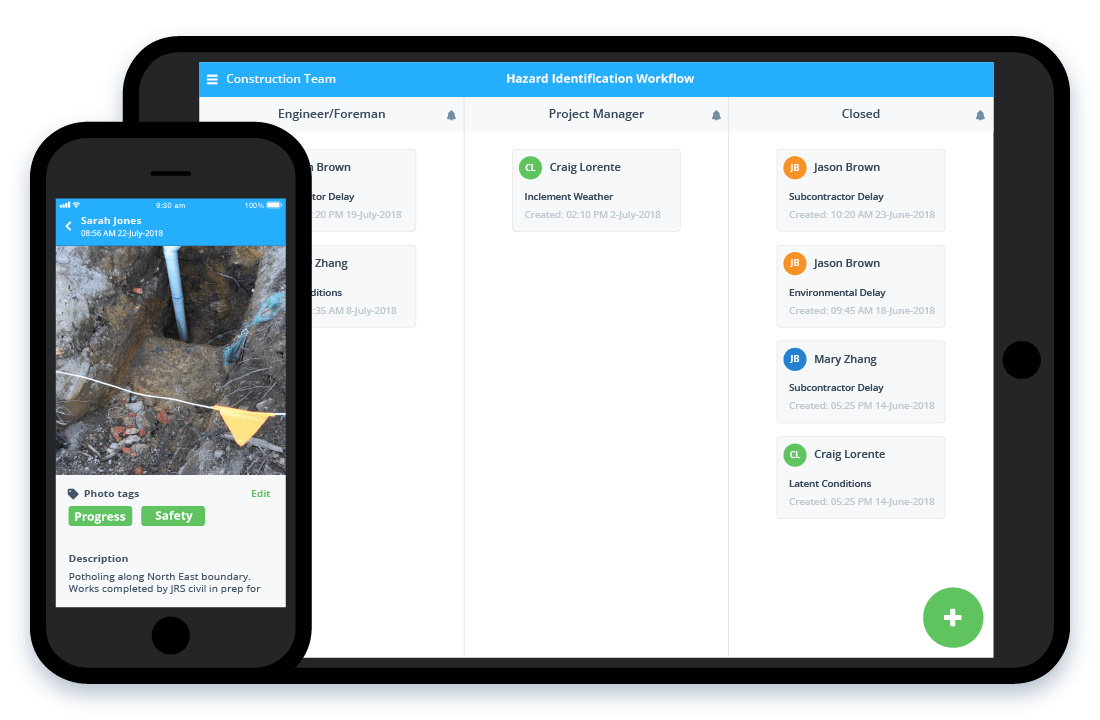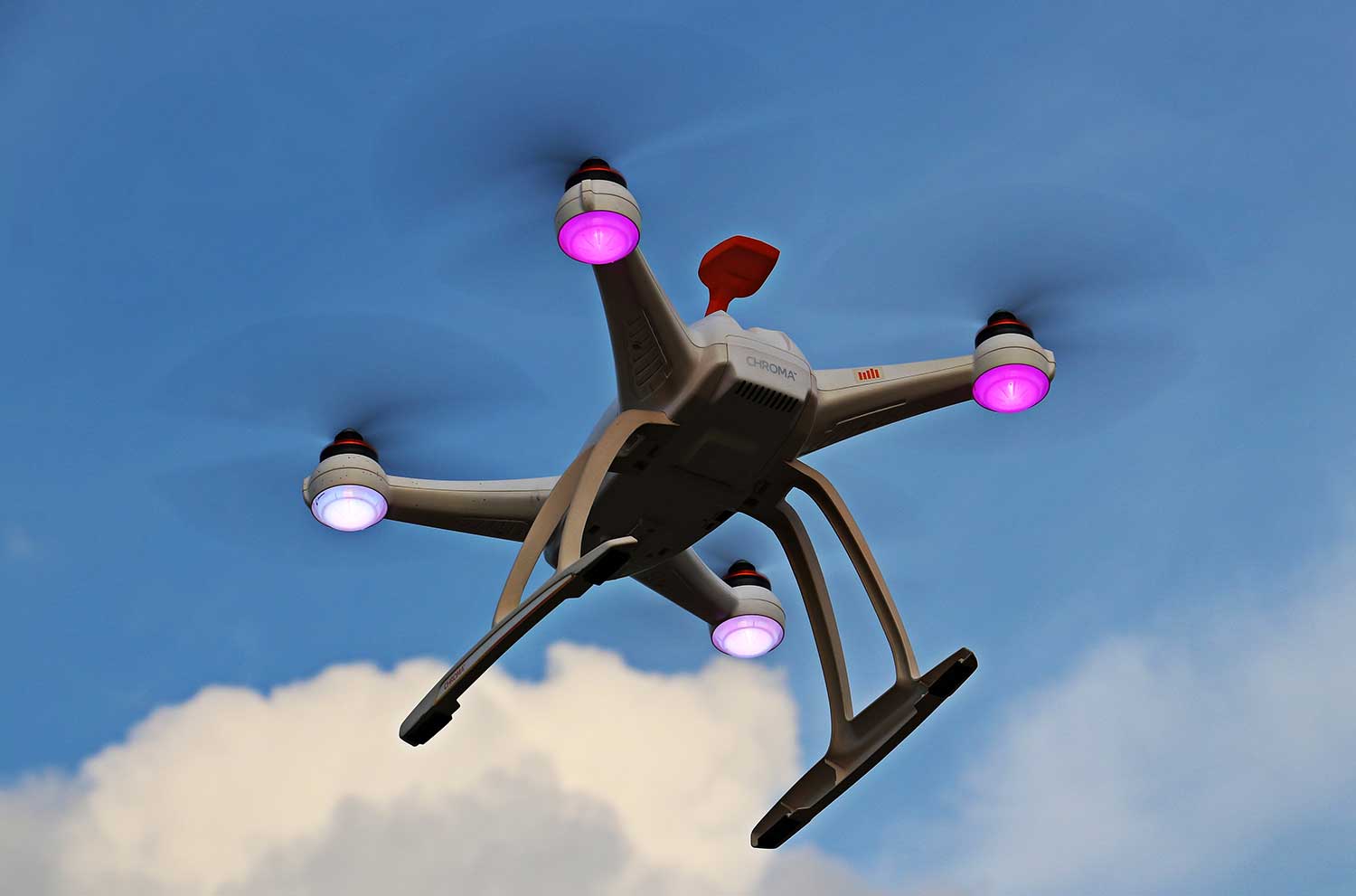Construction – Construction technology examples

The latest construction technology examples
About construction technology
Construction has come a long way in the last 100 years, and many of the advancements in construction technology are continuing to push construction projects forward at an ever-increasing rate.
Construction technology has become the main driver of construction process and productivity changes and progress. Humans cap out and have a productivity ceiling based on human capacity and work rates. To increase the output on a construction site with human alone, you need more humans - whereas technologies scale far more rapidly, don't get 'tired' and can dramatically shift what can be done.
This capital efficiency (using technology instead of human capital or human labour) is going to be the main driver of growth and change in construction moving forward, and there are already plenty of technology examples on the field and on site which are influencing the plight of projects and construction companies all over the world.
Construction technology examples
It's relatively hard to 'pick' a few construction technology examples without defining some parameters. Construction technology is an extremely broad 'idea' and ranges from advancements in site based machinery and equipment, to construction softwares and robotics.
The construction technology examples below are mostly related to what we think of as 'technology'. There isn't minor updates in current tools and technologies. These technologies are experiencing and exhibiting rapid change, adoption and growth, or are just entering the construction scene.
Wearable technology
Some of these construction technology examples are born out of the consumer market, and make sense for construction.
Wearable technologies including smart watches and apple watches are becoming more common on construction sites due to a couple of forces:
- The technology is getting better so it can be used for safety and performance purposes
- Workers and companies are becoming more mindful of health and safety, so are investing in and engaging with technologies which operate in this space
While these technologies are simple tracking devices built 'on top' of humans, wearables is one of these examples which is going to dramatically change in the coming years, when humans become truly 'modified' by these wearable technologies in the form of smart glasses, robotic arms and legs and other innovations which enable humans to perform better on construction sites as well as in every day life.

IoT (The internet of things)
The internet of things is likely to be an extension of the dramatic advancements and adoption of construction softwares.
The internet of things, commonly abbreviated to IoT, is making previously dormant objects, devices and 'things' into smart objects, which can communicate with each other.
For example, on a construction site, an IoT enables machine will be able to 'tell' a piece of software or system when it is or was being used so that hours and productivity are automatically being logged.
These smart connection which will be powered by big data, software interoperability and other data improvements will enable companies to get more insights into how each of their functions and project components - including people and machines - are being used.
Companies will be able to make more informed decisions about how to improve.
Cloud-based software and apps
Construction softwares and apps have permeated the construction industry landscape in the last few years. This is one of the technology examples which has experienced mass adoption, and yet still has a long way to go.
Some of the positive outcomes of these softwares and apps include:
- Construction workers being able to get more of their work done on site
- Construction teams and projects being able to see what's happening and collaborate in real-time
- Projects and companies removing time-consuming admin and data entry and becoming more productive
- Construction companies being able to better track and manage costs, labour and other resources
Construction softwares and apps will continue to change and evolve in the coming years (like all software-based technologies) and will continue to shift and improve how work gets planned, captured, organised and tracked.

Robotics and automation
Robots are another great example of how construction technology will be shaped in the coming years. Many of the tasks and jobs performed on construction sites are repetitive in nature and highly measurable.
At the moment, robots which can lay bricks, build walls, clear rubble, dig holes and do other tasks are getting smarter and better. While some people are worried about the rise of the robots - which may result in some job losses or job friction at the very least - many of the jobs which cause repetition base physical injuries and issues can be automated with robots.
Many of the machines and tools used on site will also be able to be automated, and new autopilot technologies from cars wand trucks will inevitably make its way on to site.
Robotics is a controversial topic, and illustrates the tension and dynamic of progress which is exhibited by many of these construction tech examples.
Unmanned aerial vehicles (UAV's) and drones
A great example of a new and evolving technology which has grabbed the attention of construction (and other industrial companies) are drones.
Drones have a broad set of uses cases and applications on construction sites including:
- Surveying
- Mapping
- Surveillance
- Reporting
Drones are not a novel technology anymore, they are a largely adopted and almost mainstream, and as they become cheaper and more accurate, they will move away from being a technology example to a standard technology commonplaces on most construction sites.

Modular construction
But not all construction technologies look like robots or do things automatically. Many construction technology improvements arise from process improvements and a different approach to an existing problem.
Modular construction is a good example of this.
Improvements in materials and digital design principles and tools has made modularising buildings possible and encouraged.
Many of these construction examples will be new, innovative and hard to fathom - while others like modular construction seem to make sense and are a positive development from some smart thinking and the circumstances brought about by access to space, housing etc.
This is not an exhaustive list of construction technology examples by any stretch of the imagination - but I hope this example list did manage to stretch your imagination.
Many of these construction technologies are already shaping the landscape, while the others are slowly creeping into the way that projects, teams and companies operate.
The next round of construction technology examples will be even more advanced, and will likely cause a little bit of anxiety as well as some wonder and amazement.
People in 80+ countries use this construction project management software - the latest in construction technology.
